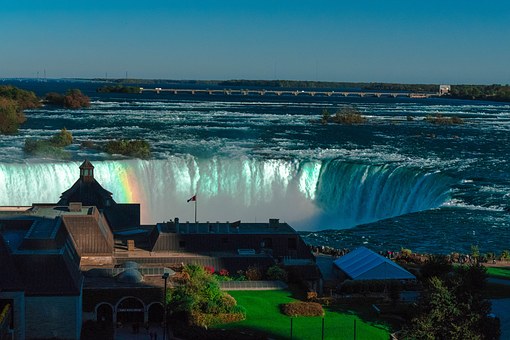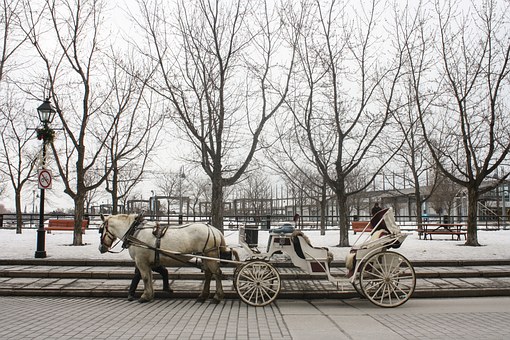Climate Change Factoid - Feedback Loops (# 8 of a series)

Author: Rich Albertson
Author: Rich AlbertsonThat terrible, soul shattering sound that sometimes comes from the speakers of a sound system when the equipment is being set up, is called feedback. It happens when the speakers and the microphone get too close to one another, allowing sound from the speakers to reenter the system through the microphone and then get amplified once again. We have something, somewhat similar in climate change. Feedback loops in climate change occur when the increasing heat caused by elevated levels of CO2 begins to affect certain previously undisturbed parts of the environment and the result of the disturbance is a new, distinct and additional contribution to making heat grow. Arctic permafrost is one of those feedback loops. Permafrost is defined by The American Heritage Dictionary, as: A layer of soil or bedrock that has been continuously frozen for at least two years and as long as tens of thousands of years. Permafrost can reach depths of up to 1,524 m (4,999 ft). It is found throughout most of the polar regions and underlies about one fifth of the Earth's land surface. Most permafrost contains something called methane hydrate which is a combination of methane and frozen water. The ice keeps the methane frozen as a solid but, once it thaws, the ice melts and the methane converts to a gas, which then rises into the atmosphere as another greenhouse gas, 21 times more effective at trapping heat than CO2. If you went to Siberia or Northern Canada back in the '70s you would have seen a vast frozen tundra, stretching as far as you could see. Today, what you will find there is, a lace work pattern of thousands of small lakes, actually some not so small at a mile across - also for as far as you can see. This is melted permafrost, it is a feedback loop and as it melts it makes a sizable contribution to the growing heat on the planet. This used to be something that might happen in the future and was considered worth worrying about at the time. Now it's become a reality. Considered another feedback loop, the Great Ocean Conveyor and Thermohaline Circulation System works very differently from the feedback resulting from melting permafrost. This giant ocean circulatory system is the method the planet uses to mix warm equatorial water with cold polar water in order to cool things down and achieve greater equilibrium of temperature amongst the oceans. If you did not already know of it, I have a feeling you are going to be just as amazed at discovering the Great Conveyor as I was. It is a mind-boggling aspect of the physiology of the Earth. A drop of water takes 1,000 years to traverse the complete ocean conveyor circuit. Check it out at the website, you will appreciate the assistance of diagrams.. Because of the growing heat, the Arctic waters are not as cold as they once were and instead of remaining separate from the northward flowing, warmer, equatorial waters of the Gulf Stream they are now beginning to mix together. The effect is a slowing of the Conveyor system and the concern is that it will stall out completely, sometime soon. When that happens, equatorial waters will stay put near the equator, instead of flowing northward, and as they get hotter and hotter they will become a much more powerful spawning ground for hurricanes. (Peer reviewed research, supporting the claims made in this factoid, can be found at the website)About the Author:

Rich Albertson is a retired lawyer, author, builder, building designer, carpenter and long time amateur naturalist. He lives in Portland, Oregon.
Albertson's most recent book (2009), The Sky is the Limit A Brief and Easy Explanation of Climate Change for Present and Future Voters (134pp), is an explanation of the science, economics, politics and a discussion of the future of climate change written for people of average experience. Climate Change Factoids are drawn from the book. His first book (1978), The Bio-Conversion of Waste to Resource (4 Vols, 2624pp), was a treatise on methods for the sustainable management of solid and liquid waste in urban society. More about the Sky is the Limit book can be found at http://www.thecircleworks.org
As a Naturalist, Albertson's primary interest is to understand and then explain the conflicts that result from modern human practices that interfere with the operation of the natural world on a planetary scale Climate Change Factoid - Patterns of Growth – When Will it Happen? (# 7 of a series) Simple Carport Plans For Country Living Manali - Blessed With Snowy Mountains Patong Hotels And Resorts Tourist Guide Planning For Phuket Vacation Packages Manali Travel Tips Looking For Best Comfort In Phuket Hotels? Manali Shift - Enchant The Pristine Mount Beauty! How To Prepare Yourself For Honeymoon Recreate Yourself On A Vacation Through Flights To Harare With Low Price Tickets Myrtle Beach Due Diligence Can Save Headaches When Booking Limo Service Top Ten Rv Camping Activities